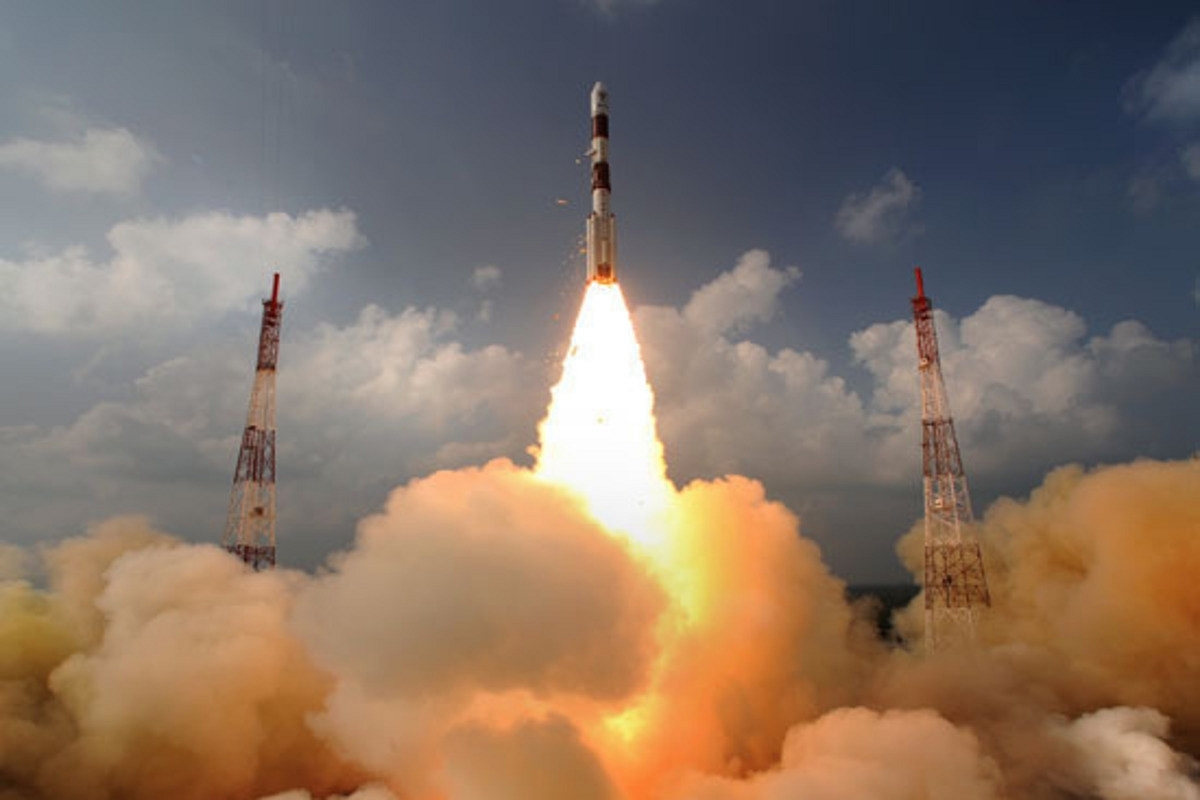News Brief
As India's First Mars Orbiter Mission Ends, Here's What We Know About ISRO's 'Mangalyaan 2' Plan

Launch of the Mars Orbiter Mission
India's Mars Orbiter craft appears to have lost contact with ground stations as it ran out of fuel and battery, bringing India's maiden interplanetary mission, 'Mangalyaan', to an end eight years after launch.
The Rs 450 crore Mars Orbiter Mission was launched onboard PSLV-C25 on November five, 2013, and the MOM spacecraft was successfully inserted into Martian orbit on 24 September 2014 in its first attempt.
A technology demonstration venture, the orbiter carried five scientific payloads collecting data on surface geology, morphology, atmospheric processes, surface temperature and atmospheric escape process.
ISRO officials noted that the Mars orbiter craft functioned for almost eight years, well beyond its designed mission life of six months.
"It has done its job and yielded significant scientific results," they said.
With the end of the first Mars mission, focus will now shift to Mangalyaan-2. While ISRO has been working on the project for some years, plans on a follow-on mission to the red planet are yet to be firmed up.
In 2016, Jitendra Singh, Union Minister of State in the Prime Minister's Office, responsible for the Department of Space, said in a written reply to a question in Rajya Sabha that the configuration, objectives and scientific experiments of MoM-2 are yet to be formulated.
"A call for proposals through an Announcement of Opportunity (AO) has been made within India to seek proposal for scientific experiments for Mars Orbiters Mission-2," Singh said.
The AO had said: "It is now planned to have the next orbiter mission around Mars for a future launch opportunity. Proposals are solicited from interested scientists within India for experiments onboard an orbiter mission around Mars (MOM-2), to address relevant scientific problems and topics."
The AO document on ISRO's website at the time said that the proposed satellite's payload capability would likely be 100 kg and that the apoarion of the orbit is expected to be around 5,000 km.
While some early reports about Mangalyaan 2 had said that the project will include a Mars lander, ISRO Chairman K Sivan clarified in an interview in 2021 that the mission will only have an orbital craft.
“India’s next Mars mission will also be an orbital one and not a landing mission," he said, adding, "after the MOM-2 mission, ISRO will then plan the landing mission on Mars, but it’s too early to talk about it right now."
The same year, Subbiah Arunan, the project director of Mars Orbiter Mission, revealed that ISRO would use the "aerobraking method [in Mangalyaan 2] to approach Mars and go close to the surface."
Aerobraking is a spaceflight technique in which the spacecraft uses friction from the atmosphere to slow down. The friction, called atmospheric drag, slows down the craft and lowers it's orbital altitude, allowing it to go closer to the surface. The use of aerobraking eliminates the need for extra propellant, helping cut down load.
However, Mangalyaan 2 is not a priority for ISRO currently.
Officials have acknowledged that the project is still on the drawing board, with the coming 'Gaganyaan', 'Chandrayaan-3' and 'Aditya – L1' projects being on the space agency's current priority list.
"Not in the approved list as of now", a senior ISRO official told PTI on being asked about an update on the MOM-2.
"We need to formulate the project proposals and payloads based on the wider consultation with the research community," the official said.
"It's still on the drawing board. But needs some more details and international collaboration for finalising the mission."
Introducing ElectionsHQ + 50 Ground Reports Project
The 2024 elections might seem easy to guess, but there are some important questions that shouldn't be missed.
Do freebies still sway voters? Do people prioritise infrastructure when voting? How will Punjab vote?
The answers to these questions provide great insights into where we, as a country, are headed in the years to come.
Swarajya is starting a project with an aim to do 50 solid ground stories and a smart commentary service on WhatsApp, a one-of-a-kind. We'd love your support during this election season.
Click below to contribute.
Latest